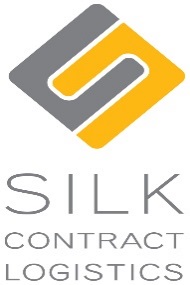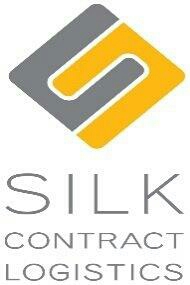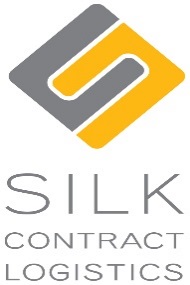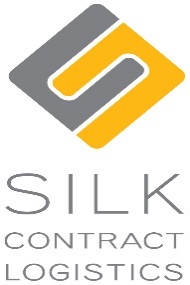Information
-
JSA Title
-
Site Name
-
Conducted on
-
Prepared by
-
Location
-
Personnel
1.0 Manual Handling
1.0 MANUAL HANDLING
-
Briefly describe any manual handling tasks: For example, lifting, carrying, assembling components, stacking materials, manually operating plant, equipment or tools.
-
1.1Have employees been trained in Manual Handling techniques
-
Briefly describe how and when the injury could occur?
-
Those Consulted?
-
Briefly describe any hazardous manual handling tasks: For example, lifting, carrying, assembling components, stacking materials, manually operating plant, equipment or tools.
-
Person responsible for actions
-
Date Completed
-
Is it likely that the worker could:
-
1.2 Can a worker sustain a back injury from lifting or carrying?
-
Briefly describe how and when the injury could occur?
-
Those Consulted?
-
Briefly describe any hazardous manual handling tasks: For example, lifting, carrying, assembling components, stacking materials, manually operating plant, equipment or tools.
-
Date Completed
-
1.3 Can the worker suffer muscle fatigue from having to repeatedly move fingers, hands wrists or <br>arms while using, tools, equipment or handling work pieces or materials?<br>
-
Briefly describe how and when the injury could occur?
-
Those Consulted?
-
Briefly describe any hazardous manual handling tasks: For example, lifting, carrying, assembling components, stacking materials, manually operating plant, equipment or tools.
-
Date Completed
-
1.4 Injure feet or legs by dropping the load, material or equipment?
-
Briefly describe how and when the injury could occur?
-
Those Consulted?
-
Briefly describe any hazardous manual handling tasks: For example, lifting, carrying, assembling components, stacking materials, manually operating plant, equipment or tools.
-
Date Completed
-
POSSIBLE SOLUTIONS TO PREVENT OR REDUCE THE LIKELIHOOD OF INJURIES (the lower numbered solutions in each section are better)
Manual Handling
1. Reduce the weight of the object to be lifted or carried; for example, smaller containers or less material per container.
2. Make sure containers are easy to lift or carry; for example, they are provided with handles or
grips, or are a comfortable shape and size.
3. Change the height of workbenches or shelving to reduce the need to bend or overreach.
4. Provide equipment to assist with the lifting carrying or moving; for example, hoists, trolleys,
scissor lifts, conveyors.
5. Make sure tools or equipment are comfortable and easy to lift, use or operate.
6. Suspend heavy tools or equipment.
7. Provide footrests, comfortable and adjustable seating and cushioned floor coverings.
8. Reduce the distance to carry objects.
9. Change the work process so that objects do not have to be lifted or moved as often by hand.
10. Introduce job rotation with a mixture of repetitive and non – repetitive tasks.
11. Provide training in safe manual handling.
12. Make sure there is a two – person lift.
13. Provide frequent short rest breaks for workers carrying out repetitive tasks.
2.0 Working Environment
2.0 WORKING ENVIRONMENTS
-
Is it likely that the worker could:
-
2.1 Suffer the effects of extreme hot or cold? (For example, working in cold room or outside).
-
Briefly describe how and when the injury could occur?
-
Those Consulted?
-
Briefly describe any hazardous manual handling tasks: For example, lifting, carrying, assembling components, stacking materials, manually operating plant, equipment or tools.
-
Person responsible for actions
-
Date Completed
-
2.2 Have difficulty seeing what they are doing or moving around because of poor lighting or glare?
-
Briefly describe how and when the injury could occur?
-
Those Consulted?
-
Briefly describe any hazardous manual handling tasks: For example, lifting, carrying, assembling components, stacking materials, manually operating plant, equipment or tools.
-
Person responsible for actions
-
Date Completed
-
2.3 Suffer from poor ventilation or lack of fresh air?
-
Briefly describe how and when the injury could occur?
-
Those Consulted?
-
Briefly describe any hazardous manual handling tasks: For example, lifting, carrying, assembling components, stacking materials, manually operating plant, equipment or tools.
-
Person responsible for actions
-
Date Completed
-
2.4 Be affected by airborne dust or strong unpleasant odours?
-
Briefly describe how and when the injury could occur?
-
Those Consulted?
-
Briefly describe any hazardous manual handling tasks: For example, lifting, carrying, assembling components, stacking materials, manually operating plant, equipment or tools.
-
Person responsible for actions
-
Date Completed
-
2.5 Slip, trip or fall from a height, at ground level or below ground level?
-
Briefly describe how and when the injury could occur?
-
Those Consulted?
-
Briefly describe any hazardous manual handling tasks: For example, lifting, carrying, assembling components, stacking materials, manually operating plant, equipment or tools.
-
Person responsible for actions
-
Date Completed
-
2.6 Be struck by a moving vehicle or mobile equipment? (For example, forklift, truck, motor vehicle).
-
Briefly describe how and when the injury could occur?
-
Those Consulted?
-
Briefly describe any hazardous manual handling tasks: For example, lifting, carrying, assembling components, stacking materials, manually operating plant, equipment or tools.
-
Person responsible for actions
-
Date Completed
-
2.7 Be struck by a falling object?
-
Briefly describe how and when the injury could occur?
-
Those Consulted?
-
Briefly describe any hazardous manual handling tasks: For example, lifting, carrying, assembling components, stacking materials, manually operating plant, equipment or tools.
-
Person responsible for actions
-
Date Completed
-
2.8 Strike or hit their head, hand, arm, hip or leg on equipment or machinery?
-
Briefly describe how and when the injury could occur?
-
Those Consulted?
-
Briefly describe any hazardous manual handling tasks: For example, lifting, carrying, assembling components, stacking materials, manually operating plant, equipment or tools.
-
Person responsible for actions
-
Date Completed
-
2.9 Be bitten by an animal or insect? Be exposed to UV radiation? (For example, exposed to direct sunlight).
-
Briefly describe how and when the injury could occur?
-
Those Consulted?
-
Briefly describe any hazardous manual handling tasks: For example, lifting, carrying, assembling components, stacking materials, manually operating plant, equipment or tools.
-
Person responsible for actions
-
Date Completed
-
2.10 Be injured or suffer an illness due to handling or coming in contact with biological materials or products? (For example, needle stick, human/animal waste).
-
Briefly describe how and when the injury could occur?
-
Those Consulted?
-
Briefly describe any hazardous manual handling tasks: For example, lifting, carrying, assembling components, stacking materials, manually operating plant, equipment or tools.
-
Person responsible for actions
-
Date Completed
-
2.11 Suffer hearing damage due to excessive levels of background noise?
-
Briefly describe how and when the injury could occur?
-
Those Consulted?
-
Briefly describe any hazardous manual handling tasks: For example, lifting, carrying, assembling components, stacking materials, manually operating plant, equipment or tools.
-
Person responsible for actions
-
Date Completed
-
POSSIBLE SOLUTIONS TO PREVENT OR REDUCE THE LIKELIHOOD OF INJURIES (the lower numbered solutions in each section are better).
Working Environment
1. Install ventilation extraction systems in hot work areas.
2. Fit localised lighting on machines to enable operators to comfortably view work pieces.
3. Suspend electrical power lines and air lines.
4. Round-off edges and corners of benches, equipment or fittings.
5. Install safety barriers to protect pedestrians from vehicles or mobile plant.
6. Install mirrors and flashing lights to warn of approaching vehicles or mobile plant.
7. Fit reverse warning beepers and lights to mobile plant for example, forklifts.
8. Install hand rails on ramps and steps.
9. Install non-slip floor surfaces.
10. Install good lighting along walkways.
11. Removing overhanging objects from work areas.
12. Provide fixed plant and machinery with drip trays.
13. Supply cool water for workers required to work in hot areas.
14. Regularly sweep and clean floors.
15. Keep walkways and work areas uncluttered.
16. Identify walkways with painted yellow lines.
17. Have available temporary signs to warn of slippery surfaces.
18. Introduce job rotation and frequent rest breaks for jobs which could cause workers to
suffer from the extremes of hot or cold.
19. Provide workers with a variety of tasks.
20. Introduce job rotation for jobs which may be fatiguing.
21. Provide personal protective clothing and footwear to minimise the effects of cold.
3.0 Plant or Machinery
3.0 PLANT OR MACHINERY
-
Describe the plant or machinery being operated: For example, presses, guillotines, fork lifts, conveyors, jigs and fixtures, X-ray machines, hoists, cranes, robots.
-
Is it likely that the worker could:
-
3.1 Have their fingers hands or arms crushed or amputated by being caught in a moving part of the plant or machine?
-
Briefly describe how and when the injury could occur?
-
Those Consulted?
-
Briefly describe any hazardous manual handling tasks: For example, lifting, carrying, assembling components, stacking materials, manually operating plant, equipment or tools.
-
Person responsible for actions
-
Date Completed
-
3.2 Be struck in the eye or face by a piece of the workpiece, plant or machine?
-
Briefly describe how and when the injury could occur?
-
Those Consulted?
-
Briefly describe any hazardous manual handling tasks: For example, lifting, carrying, assembling components, stacking materials, manually operating plant, equipment or tools.
-
Person responsible for actions
-
Date Completed
-
3.3 Have their fingers or hands cut or amputated by rotating or moving blades or cutters?
-
Briefly describe how and when the injury could occur?
-
Those Consulted?
-
Briefly describe any hazardous manual handling tasks: For example, lifting, carrying, assembling components, stacking materials, manually operating plant, equipment or tools.
-
Person responsible for actions
-
Date Completed
-
3.4 Have their hair or clothing caught by a moving or rotating part of the plant, machine?
-
Briefly describe how and when the injury could occur?
-
Those Consulted?
-
Briefly describe any hazardous manual handling tasks: For example, lifting, carrying, assembling components, stacking materials, manually operating plant, equipment or tools.
-
Person responsible for actions
-
Date Completed
-
3.5 Be burnt by coming in contact with exposed hot or cold parts of the plant or machine?
-
Briefly describe how and when the injury could occur?
-
Those Consulted?
-
Briefly describe any hazardous manual handling tasks: For example, lifting, carrying, assembling components, stacking materials, manually operating plant, equipment or tools.
-
Person responsible for actions
-
Date Completed
-
3.6 Be burnt by hot or cold material escaping from the plant or machine? (For example steam, hot oil or molten material).
-
Briefly describe how and when the injury could occur?
-
Those Consulted?
-
Briefly describe any hazardous manual handling tasks: For example, lifting, carrying, assembling components, stacking materials, manually operating plant, equipment or tools.
-
Person responsible for actions
-
Date Completed
-
3.7 Be electrocuted while operating, repairing, servicing or cleaning the machinery?
-
Briefly describe how and when the injury could occur?
-
Those Consulted?
-
Briefly describe any hazardous manual handling tasks: For example, lifting, carrying, assembling components, stacking materials, manually operating plant, equipment or tools.
-
Person responsible for actions
-
Date Completed
-
3.8 Sustain hearing damage due to excessive levels of noise produced by the plant or machine?
-
Briefly describe how and when the injury could occur?
-
Those Consulted?
-
Briefly describe any hazardous manual handling tasks: For example, lifting, carrying, assembling components, stacking materials, manually operating plant, equipment or tools.
-
Person responsible for actions
-
Date Completed
-
3.9 Be crushed as a consequence of the mobile plant they are operating rolling over?
-
Briefly describe how and when the injury could occur?
-
Those Consulted?
-
Briefly describe any hazardous manual handling tasks: For example, lifting, carrying, assembling components, stacking materials, manually operating plant, equipment or tools.
-
Person responsible for actions
-
Date Completed
-
3.10 Sustain an injury because they were unable to identify, reach or operate the controls or emergency stop? (For example, if they were caught in the machine).
-
Briefly describe how and when the injury could occur?
-
Those Consulted?
-
Briefly describe any hazardous manual handling tasks: For example, lifting, carrying, assembling components, stacking materials, manually operating plant, equipment or tools.
-
Person responsible for actions
-
Date Completed
-
POSSIBLE SOLUTIONS TO PREVENT OR REDUCE THE LIKELIHOOD OF INJURIES (the lower numbered solutions in each section are better).
Plant or Machinery
1. Enclose very noisy plant or machinery in sound-proof barriers or relocate in separate area from
the majority of workers.
2. Guard moving parts of the plant or machinery (fixed or adjustable guards, photo-electric, pressure
sensing mats).
3. Interlock guards with power supply (power supply is automatically switched off when guard is
opened or removed).
4. Make guards difficult to remove or machinery difficult to disable.
5. Install two – hand controls.
6. Provide feeder tables or rollers.
7. Use clamps, supports, guides or stops to position workpieces.
8. Fit lock out switches to all plant and machinery to disconnect power supply while being cleaned,
serviced or repaired.
9. Guard or shield hot or cold machine components from accidental contact.
10. Fit emergency stops to plant and machinery which is easy to see, operate and reach at all times.
11. Make sure plant or machine controls are easy for the operator to understand and reach.
12. Introduce lock-out procedures and provide locks and tags.
13. Write safe operating procedures for all machinery operations.
14. Clearly identify with warning signs and line marking areas where hot processes are carried out.
15. Provide workers likely to be burnt by hot material with personal protective equipment such as
gauntlets, aprons, face shields.
16. Provide workers with good quality hearing protection.
4.0 Hazardous Substances
4.0 HAZARDOUS SUBSTANCES
-
Description of the hazardous substance(s): Obtained from Material Safety Data Sheet or label on container, drum or packaging.
-
Do you have hazardous substances onsite?
-
Is it likely that the worker could:
-
4.1 Come in contact with the worker’s skin?
-
Briefly describe how and when the injury could occur?
-
Those Consulted?
-
Briefly describe any hazardous manual handling tasks: For example, lifting, carrying, assembling components, stacking materials, manually operating plant, equipment or tools.
-
Person responsible for actions
-
Date Completed
-
4.2 Come in contact with the worker’s eyes?
-
Briefly describe how and when the injury could occur?
-
Those Consulted?
-
Briefly describe any hazardous manual handling tasks: For example, lifting, carrying, assembling components, stacking materials, manually operating plant, equipment or tools.
-
Person responsible for actions
-
Date Completed
-
4.3 Be breathed in by the worker?
-
Briefly describe how and when the injury could occur?
-
Those Consulted?
-
Briefly describe any hazardous manual handling tasks: For example, lifting, carrying, assembling components, stacking materials, manually operating plant, equipment or tools.
-
Person responsible for actions
-
Date Completed
-
4.4 Be unintentionally swallowed by the worker?
-
Briefly describe how and when the injury could occur?
-
Those Consulted?
-
Briefly describe any hazardous manual handling tasks: For example, lifting, carrying, assembling components, stacking materials, manually operating plant, equipment or tools.
-
Person responsible for actions
-
Date Completed
-
4.5 Enter the worker’s body through any other means? (For example, open wound or injection).
-
Briefly describe how and when the injury could occur?
-
Those Consulted?
-
Briefly describe any hazardous manual handling tasks: For example, lifting, carrying, assembling components, stacking materials, manually operating plant, equipment or tools.
-
Person responsible for actions
-
Date Completed
-
4.6 Cause a fire or explosion?
-
Briefly describe how and when the injury could occur?
-
Those Consulted?
-
Briefly describe any hazardous manual handling tasks: For example, lifting, carrying, assembling components, stacking materials, manually operating plant, equipment or tools.
-
Person responsible for actions
-
Date Completed
-
4.7 Cause an injury because the container is not clearly labelled to alert workers to its contents or dangers?
-
Briefly describe how and when the injury could occur?
-
Those Consulted?
-
Briefly describe any hazardous manual handling tasks: For example, lifting, carrying, assembling components, stacking materials, manually operating plant, equipment or tools.
-
Person responsible for actions
-
Date Completed
-
POSSIBLE SOLUTIONS TO PREVENT OR REDUCE THE LIKELIHOOD OF INJURIES (the lower numbered solutions in each section are better).
Chemicals or Substances
1. Use less dangerous chemicals or substances.
2. Use paste or pellets instead of powders.
3. Apply paint by brush instead of spraying.
4. Store chemicals in sealed containers.
5. Install an extraction system to remove fumes vapours or dust.
6. Obtain Material Safety Data Sheets for all chemicals or substances.
7. Follow safety precautions contained in Material Safety Data Sheets.
8. Make sure all containers are labelled.
9. Write safe operating procedures for the handling or use of chemicals or substances.
10. Train workers on the safe handling or use of chemicals or substances.
11. Provide first aid, safety showers, eye wash.
12. Provide proper personal protective equipment such as gloves, aprons, cartridge respirators,
Safety glasses and face shields.
5.0 Tools or Equipment
5.0 TOOLS OR EQUIPMENT
-
Describe the tools or equipment being used: For example, electric drills, angle grinders, polishers, staple guns, chairs, computer screens.
-
Is it likely that the worker could:
-
5.1 Be struck in the eye or face by a piece of material?
-
Briefly describe how and when the injury could occur?
-
Those Consulted?
-
Briefly describe any hazardous manual handling tasks: For example, lifting, carrying, assembling components, stacking materials, manually operating plant, equipment or tools.
-
Person responsible for actions
-
Date Completed
-
5.2 Have their fingers or hands pierced by a part of the equipment or material? (For example, nail or staple).
-
Briefly describe how and when the injury could occur?
-
Those Consulted?
-
Briefly describe any hazardous manual handling tasks: For example, lifting, carrying, assembling components, stacking materials, manually operating plant, equipment or tools.
-
Person responsible for actions
-
Date Completed
-
5.3 Have their fingers or hands squashed or crushed by a part of the tool or equipment?
-
Briefly describe how and when the injury could occur?
-
Those Consulted?
-
Briefly describe any hazardous manual handling tasks: For example, lifting, carrying, assembling components, stacking materials, manually operating plant, equipment or tools.
-
Person responsible for actions
-
Date Completed
-
5.4 Have their fingers or hands cut or amputated by rotating or moving blades or cutters?
-
Briefly describe how and when the injury could occur?
-
Those Consulted?
-
Briefly describe any hazardous manual handling tasks: For example, lifting, carrying, assembling components, stacking materials, manually operating plant, equipment or tools.
-
Person responsible for actions
-
Date Completed
-
5.5 Be burnt by a part of the equipment?
-
Briefly describe how and when the injury could occur?
-
Those Consulted?
-
Briefly describe any hazardous manual handling tasks: For example, lifting, carrying, assembling components, stacking materials, manually operating plant, equipment or tools.
-
Person responsible for actions
-
Date Completed
-
5.6 Be electrocuted while operating the equipment?
-
Briefly describe how and when the injury could occur?
-
Those Consulted?
-
Briefly describe any hazardous manual handling tasks: For example, lifting, carrying, assembling components, stacking materials, manually operating plant, equipment or tools.
-
Person responsible for actions
-
Date Completed
-
5.7 Suffer hand, arm or shoulder injuries due to vibration generated by the piece of equipment?
-
Briefly describe how and when the injury could occur?
-
Those Consulted?
-
Briefly describe any hazardous manual handling tasks: For example, lifting, carrying, assembling components, stacking materials, manually operating plant, equipment or tools.
-
Person responsible for actions
-
Date Completed
-
5.8 Suffer hearing damage due to excessive levels of noise produced by the equipment?
-
Briefly describe how and when the injury could occur?
-
Those Consulted?
-
Briefly describe any hazardous manual handling tasks: For example, lifting, carrying, assembling components, stacking materials, manually operating plant, equipment or tools.
-
Person responsible for actions
-
Date Completed
-
POSSIBLE SOLUTIONS TO PREVENT OR REDUCE THE LIKELIHOOD OF INJURIES (the lower numbered solutions in each section are better).
Tools or Equipment
1. Make sure tools or equipment with rotating or moving blades or cutters are fitted with guards.
2. Make sure electrically powered equipment is only used if protected by a safety switch
(Residual Current Device).
3. Provide industrially insulated power extension cords.
4. Prevent mobile plant or vehicles driving over power cords.
5. Regularly test and tag electrically powered equipment.
6. Write safe operating procedures for all powered tools and equipment.
7. Train workers on the safe use of tools and equipment.
8. Introduce job rotation and frequent rest breaks for jobs which involve the risk of injury from mechanical vibration.
9. Provide safety glasses or face shields.
10. Provide workers with good quality hearing protection.
11. Provide workers likely to be burnt by hot material with personal protective equipment
such as gauntlets, aprons, face shields.
6.0 Working Arrangements
6.0 WORKING ARRANGEMENTS
-
Describe the working arrangements: For example, hours of work, length of shift, overtime arrangements remote or isolated work.
-
Is it likely that the worker could:
-
6.1 Suffer fatigue or lose concentration because they have to work irregular or extended hours of work? (For example, extended overtime).
-
Briefly describe how and when the injury could occur?
-
Those Consulted?
-
Briefly describe any hazardous manual handling tasks: For example, lifting, carrying, assembling components, stacking materials, manually operating plant, equipment or tools.
-
Person responsible for actions
-
Date Completed
-
6.2 Suffer fatigue or lose concentration because they have to work at a pace which is too fast (difficult to maintain) or too slow?
-
Briefly describe how and when the injury could occur?
-
Those Consulted?
-
Briefly describe any hazardous manual handling tasks: For example, lifting, carrying, assembling components, stacking materials, manually operating plant, equipment or tools.
-
Person responsible for actions
-
Date Completed
-
6.3 Be subject to intimidation, verbal abuse, bullying or violence?
-
Briefly describe how and when the injury could occur?
-
Those Consulted?
-
Briefly describe any hazardous manual handling tasks: For example, lifting, carrying, assembling components, stacking materials, manually operating plant, equipment or tools.
-
Person responsible for actions
-
Date Completed
-
6.4 Find it difficult to maintain necessary communication with colleagues? (For example, remote or isolated work).
-
Briefly describe how and when the injury could occur?
-
Those Consulted?
-
Briefly describe any hazardous manual handling tasks: For example, lifting, carrying, assembling components, stacking materials, manually operating plant, equipment or tools.
-
Person responsible for actions
-
Date Completed
Sign Off
-
Completed By:
-
Date Completed:
-
Site Manager:
-
Date Completed














